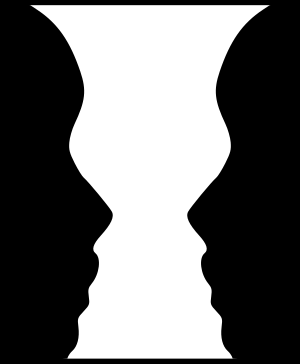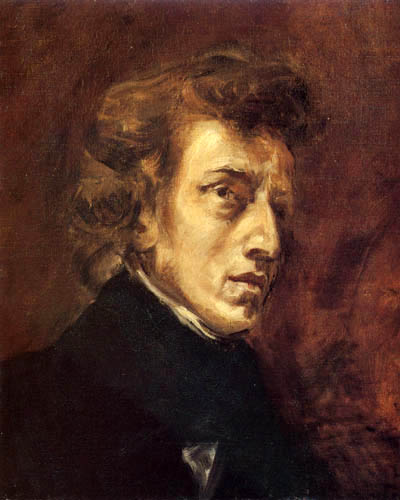Hi geotrupede,
It's best to consider the relationship between
figure and
ground when considering issues about how to use fast lenses at wide open apertures. In perception psychology, the figure is what captures the viewer's attention. Meanwhile, the ground is what the viewer ignores. A classic example is the graphic below:
wikipedia
When a viewer concentrates on the white portion of the graphic while ignoring the black portion, then he sees a vase. On the other hand, if he concentrates on the black portion while ignoring the white portion he will see the faces of two people. The way this relates to lens usage and composition in photography is that whenever an object in an image has "distinct contours" then it can be discerned as a figure by viewers. Meanwhile, if an object has indistinct (ambiguous or even non-existent) contours then a viewer has a hard time attending to it and consequently the object becomes part of the image's ground.
1) Objects that are
in-focus have distinct contours and can become the figure portion of a photograph.
2) Objects that are
out-of-focus (bokeh etc) lack contours and can become the ground of the photograph.
Obviously, there are lots of ways that a lens can relate to an object when composing a photograph that can alter the relationship between figure and ground. For example, a Noctilux shot at .95 will create a huge blurry ground in any portions of the photo that are outside of the DOF. However, any objects contained within the DOF will have distinct contours and can become figures. The point is that a really fast lens like a Noctilux might give a photographer more options than slower lenses for placing objects within the figure or ground portion of a photograph.
But, it's important to remember that the real key to the figure/ground relationship when it comes to photography is the presence of distinct/indistinct contours. In that sense, the use of lenses at certain apertures are only one part of the equation. Any technique that creates distinct contours (hard lighting, silhouettes, high contrast etc) also creates figures. Conversely, any technique that creates indistinct contours (motion blur, shutter drag, dappled lighting etc) also creates grounds. For example, an object could be in perfect focus and yet exposed with a shutter drag to create motion blur. In this case, the contours of the object would be indistinct and become part of the ground of the image even though it was originally in perfect focus at capture.
On a related topic, the difference between so-called "Pictorialism" and "Straight" photography is really about the degrees of figure and ground contained within the images. Straight photography has a higher degree of figures available for the viewer to attend while Pictorial photographs generally have more indistinct contours and therefore push objects into the ground. A similar division of style also exists in the world of painting. Heinrich Wolfflin, the famous art historian, claimed that all styles of painting come down to just the simple difference between
linear and
painterly. Linear paintings have high degrees of distinct contours present and are associated with Renaissance Art while painterly paintings have high degrees of indistinct contours and are associated with movements like Impressionism. The main point is that there is a direct correlation between straight/pictorial styles of photography with linear/painterly styles of painting. The degrees of distinct/indistinct contours present is what determines the styles according to the figure/ground relationship from perception psychology.
Here's two quick examples of the different styles of painting mentioned by Wolfflin:
Ingres - Napoleon
Delacroix - Chopin
The portrait of Napoleon by Ingres is an excellent example of linear painting and contains strong figures with distinct contours. Meanwhile, the portait of Chopin by Delacroix is an excellent example of painterly painting and contains a high degree of indistinct and ambiguous contours that blend the main subject into the ground of the image. In the world of photography, a Straight style photographer like Ansel Adams might be more readily associated with a linear painter like Ingres because of the high degree of distinct contours contained in both of their artworks. Meanwhile, Pictorial style photographers like Sarah Moon or Paolo Roversi could find their counterpart in a painterly painter like Delacroix.




